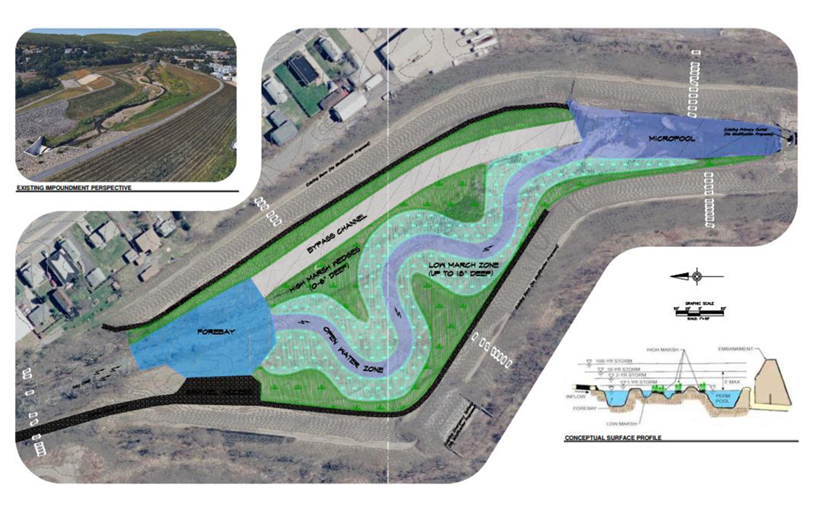Wyoming Valley Sanitary Authority Wins Governor’s Award for Local Government Excellence
The Wyoming Valley Sanitary Authority (WVSA) received the Governor’s Award for Local Government Excellence at a ceremony in Harrisburg on April 11, 2018. WVSA was honored for spearheading an innovative, regional approach to stormwater management that is saving municipalities in Luzerne County millions of dollars on their regulatory compliance and pollutant reduction efforts. Herbert, Rowland & Grubic, Inc. (HRG) helped WVSA develop this approach.
Jim Tomaine, Wyoming Valley Sanitary Authority, accepts Governor’s Award for Local Government Excellence for Building Community Partnerships on behalf of Luzerne County. pic.twitter.com/jZ2CXKDZpJ
— PACountiesGR (@PACountiesGR) April 11, 2018
Hundreds of communities across Pennsylvania are required to apply for a permit under the state Department of Environmental Protection’s MS4 program. This program is designed to manage stormwater runoff to prevent pollutants from entering our watersheds and reduce the risk of flooding. The latest round of permitting requires many communities to cut the level of pollutants they discharge to a particular watershed by as much as 10% over the next five years. The cost of producing and implementing these pollutant reduction plans can be too much for many local governments whose budgets are already stretched thin.
With that in mind, WVSA asked HRG to prepare a feasibility study focused on whether regional cooperation among all the municipalities in the county could lower the cost of compliance. According to HRG’s study, the approach will indeed save participating municipalities more than $200 million over the next 20 years. Some savings come from sharing the cost of planning and other fixed expenses, but the biggest savings come from the construction of best management practices meant to help the communities reach their pollutant reduction goals. Working together, the municipalities can construct fewer, more effective projects that do a better job of reducing pollution for a lower cost than municipalities would be able to achieve on their own.
The Wyoming Valley Sanitary Autority’s determination to create a better quality of life for #NEPA residents is the reason why it has received this prestigious award today… Congrats on winning a 2018 Governor’s Award for Local Government Excellence!https://t.co/bqnPZkKw13
— Sen. John Yudichak (@SenJohnYudichak) April 11, 2018
ABOUT THE WYOMING VALLEY SANITARY AUTHORITY
The Wyoming Valley Sanitary Authority (WVSA) has been providing wastewater treatment service for residents of Luzerne County since 1962. WVSA’s service area includes 35 municipalities from Harveys Lake to Pittston to Newport Township. Learn more about the authority and its services at www.wvsa.org
ABOUT HRG
Herbert, Rowland & Grubic, Inc. (HRG) is a nationally ranked design firm providing civil engineering, surveying, and environmental services. The firm was founded in Harrisburg in 1962 and has grown to employ more than 200 people in West Virginia, Pennsylvania, and Ohio. For more information, please visit the website at www.hrg-inc.com.




